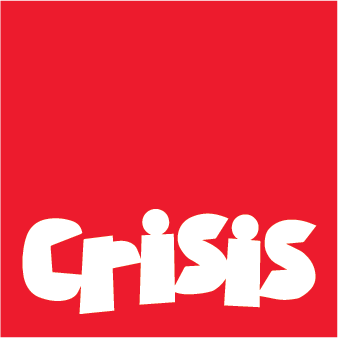Action urgently needed to tackle homelessness in Northern Ireland
10.11.2016
Homelessness in Northern Ireland remains at historically high levels, with rising numbers of households officially accepted as homeless over the past three years, according to new research published today by Crisis and the Joseph Rowntree Foundation (JRF).
The report warns that official homelessness rates in Northern Ireland are the highest in the UK, underlining the need for incoming measures aimed at preventing people from losing their home in the first place.
The report comes as the Northern Ireland Housing Executive (NIHE) prepares to roll out a new ‘Housing Options’ approach (see note) aimed at preventing homelessness and bringing Northern Ireland more in line with the rest of the UK. This model could be a major positive development in tackling homelessness in Northern Ireland, but its success must be judged by careful monitoring of the number of households that are prevented from becoming homeless in practice.
The findings are from The Homelessness Monitor Northern Ireland 2016 - an independent, state-of-the-nation study tracking the impact of economic and policy developments on homelessness in the country.
The report shows that 7,789 households were accepted as homeless in 2015/16 (not counting older people rehoused from unsuitable accommodation who tend not to be treated as officially homeless elsewhere in the UK), compared to 7,322 in 2012/13, with breakdown of shared housing arrangements/ family dispute the leading cause of homelessness. These historically high levels of homelessness are blamed on wider housing market and socio-economic factors, possibly stemming from historic affordability issues and the extreme boom and bust seen in the Northern Ireland housing market over the past decade.
Jon Sparkes, Chief Executive of Crisis, said: “Homelessness in Northern Ireland remains at historically high levels, and over the last three years we’ve seen acceptances creeping up. Behind these statistics are growing numbers of people struggling to keep a roof over their heads in an unstable housing market.
“Northern Ireland has the highest rate of officially recognised homelessness in the UK, yet that could change if incoming measures aimed at preventing people from becoming homeless in the first place are fully implemented. Prevention is better than cure, and we’ve already seen improvements from similar schemes elsewhere in the UK, especially Wales.
Brian Robson, Housing Policy and Research Manager at JRF, said: “Today’s report shows the pressing need for the prevention-focused approach to homelessness that’s about to be implemented in Northern Ireland.
“The new approach has the potential to be a real step forward, but it will need careful monitoring. The Northern Ireland Executive’s Programme for Government pledges to care for others and help those in need. The extent to which homelessness is prevented will be a key test of this commitment."
Ricky Rowledge, CEO of the Council for the Homeless Northern Ireland, said: “The NIHE, in partnership with all relevant agencies, is currently developing the 2017/22 Homelessness Strategy for NI. We therefore welcome the timely publication of the Homelessness Monitor, and will take note of the recommendations arising from of this reliable source of robust analysis.
Key findings:
- Statutory homelessness has remained at historically high levels since 2005/6. In 2015/16, 18,600 households presented as homeless in Northern Ireland (including elderly people rehoused from unsuitable accommodation). 60% - 11,200 – were accepted as being owed a legal duty under the law.
- Not counting mainly older people rehoused from unsuitable accommodation (a group not generally treated as statutorily homeless elsewhere in the UK), a total of 7,789 households were accepted as homeless in 2015/16. This is a rise of 6% since 2012/13.
- The use of temporary accommodation has been fairly steady in recent years, with between 2,800 and 3,000 placements made annually.
- Between 76,000 and 136,000 adults currently live as ‘concealed’ households who would prefer to live independently.
- Overcrowding affects 16,000 households in Northern Ireland (2.4%).
- Rates of official homelessness are higher in Northern Ireland than anywhere else in the UK (13.4 statutory acceptances per 1000 households compared to 2.3 in England), partly as a result of policy and administrative practices that differ from those of Great Britain.
